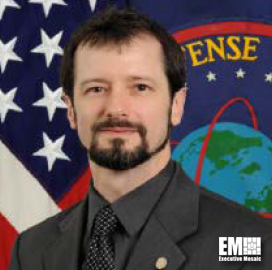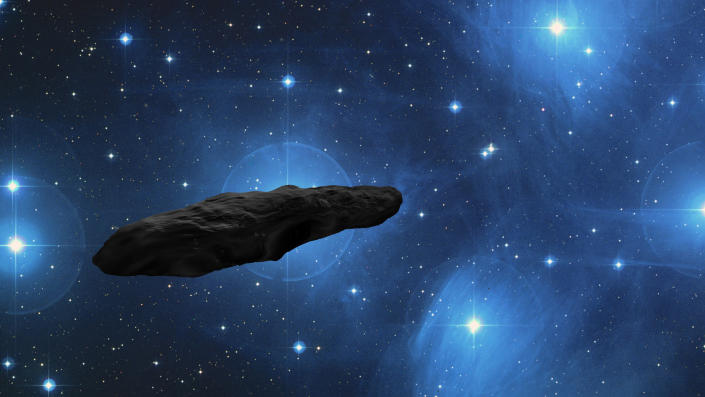Could an alien mothership be hovering around the solar system, sending out tiny probes to explore planets? According to a Harvard scientist and a Pentagon official, it’s possible.
In a draft paper, the pair said it is feasible an extraterrestrial spaceship could be in our galactic neighborhood, exploring the region by the means of “dandelion seeds” — small spacecraft that can gather and send back information, similar to the way humans send out spacecraft to explore planets.

Professor Loeb received a PhD in plasma physics at age 24 from the Hebrew University of Jerusalem (1986) and was subsequently a long-term member at the Institute for Advanced Study in Princeton (1988-1993), where he started to work in theoretical astrophysics. In 1993 he moved to Harvard University where he was tenured three years later. He is now the Frank B. Baird Jr. Professor of Science and former chair of the department
Avi Loeb, an astronomer at Harvard University, and Sean M. Kirkpatrick, director of the Pentagon’s All-domain Anomaly Resolution Office (AARO) — established in July 2022 by the Department of Defense (DoD) to detect and study “objects of interest” — released the draft, Physical Constraints on Unidentified Aerial Phenomena, on March 7. It is not an official Pentagon document but was carried out in partnership with the DoD. It has not been peer-reviewed.
Loeb is known for his research into ‘Oumuamua — an interstellar visitor from beyond the solar system. Astronomers first detected the cigar-shaped object in 2017 and originally thought it was a comet. However, its elongated shape, its lack of coma (the cloud of gases that envelope a comet), and the fact that it was accelerating away from the sun raised questions about the comet theory. Loeb suggested instead that ‘Oumuamua was an alien spaceship.

Dr. Sean Kirkpatrick
- Deputy Director, J2 Intelligence Directorate
- U.S. Space Command
Dr. Kirkpatrick was appointed the Deputy Director of Intelligence and the DNI Representative for USSPACECOM upon establishment after designing the intelligence enterprise across and through the USSPACECOM. Dr. Kirkpatrick brings a significant depth of expertise in scientific and technical intelligence (S&TI) policy, research and development, acquisitions, and operations, specializing in space/counterspace mission areas to the USSPACECOM team.
Six months before ‘Oumuamua’s close approach to Earth, a small interstellar meteor measuring around 3 feet (1 meter) wide smashed into Earth. This meteor, IM2, was not related to ‘Oumuamua, but it got Loeb thinking.

The interloper ‘Oumuamua continues to puzzle astronomers and astrophysicists. (Image credit: Bjorn Bakstad via Getty Images)
That coincidence inspired him “to consider the possibility that an artificial interstellar object could potentially be a parent craft that releases many small probes during its close passage to Earth, an operational construct not too dissimilar from NASA missions,” Loeb told Live Science in an email. “These ‘dandelion seeds’… could be separated from the parent craft by the tidal gravitational force of the sun or by a maneuvering capability.”
In the draft paper, Loeb and Kirkpatrick looked at Unidentified Anomalous Phenomena (UAPs, the government’s preferred term for UFOs) confined by known physics. The authors suggest the dandelion seed probes could reach Earth for exploration without being detected by astronomers as they would likely be too small to reflect enough sunlight for survey telescopes to detect.
“Equipped with a large surface-to-mass ratio of a parachute, technological ‘dandelion seeds’ could slow down in the Earth’s atmosphere to avoid burnup and then pursue their objectives wherever they land,” they wrote.
Aliens would likely want to explore rocky planets with an atmosphere in the solar system, the authors propose. From a distance, Venus, Earth and Mars would all look appealing, with Earth being of greatest interest once aliens found signatures of liquid water. The alien civilization that created the probes would not need to be on the mothership. It would be unlikely that it could even communicate with the probes.
The alien civilization may not even exist anymore. Most stars in the solar system formed billions of years before the sun. A habitable planet with intelligent life could have been sending out probes long before Earth formed. Searching for “resembles checking our mailbox for any packages that may have accumulated over time there, even if the senders are not alive anymore,” Loeb said.
TYT Newsroom


